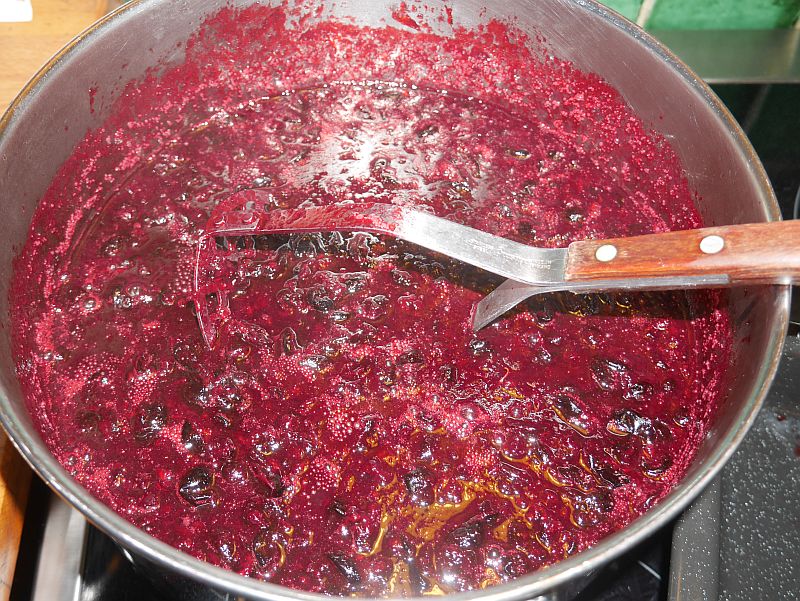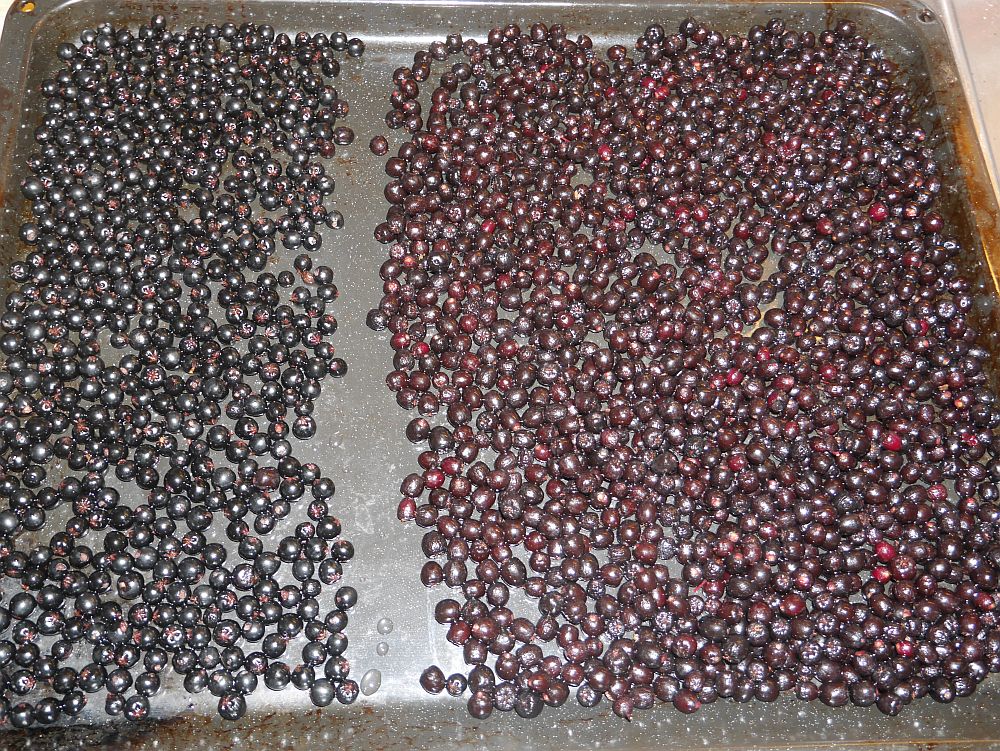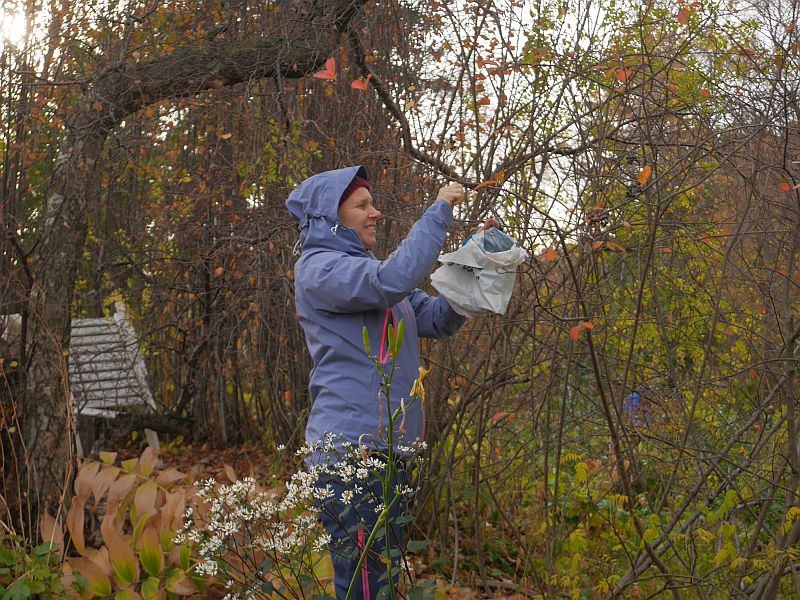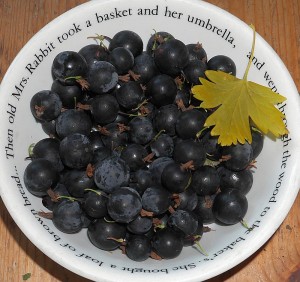As far as possible, I like to eat fresh fruit and berries from the garden, usually with muesli for breakfast. I’ve been self-sufficient for many years, mostly home grown but augmented with wild foraged bilberries / blåbær. From when the cellar stored apples are finished, usually in April to the first haskaps and strawberries are ready, we go over to rehydrated dried fruit. Currently these are the berries and fruit we are eating now in autumn as the first frosts threaten:
1. Elaeagnus umbellata (autumn olive; Japansk sølvbusk)
2. Rubus ‘Sonja’ (blackberry; bjørnebær) – the only blackberry cultivar I am aware of that is hardy enough for our climate, not freezing in winter. Productive with tasty berries too!
3. Ribes divaricatum “Worcesterberry” (Worcesterbær)
4. Ribes biebersteinii (Ribes petraeum var. biebersteinii) (black redcurrant; svartrips); isn’t truly black, more dark purple coloured; hang a long time on the bushes and don’t seem to be taken by thrushes (like blackcurrants)
5. Malus domestica (apple; epler) – eating the windfalls that won’t store long.

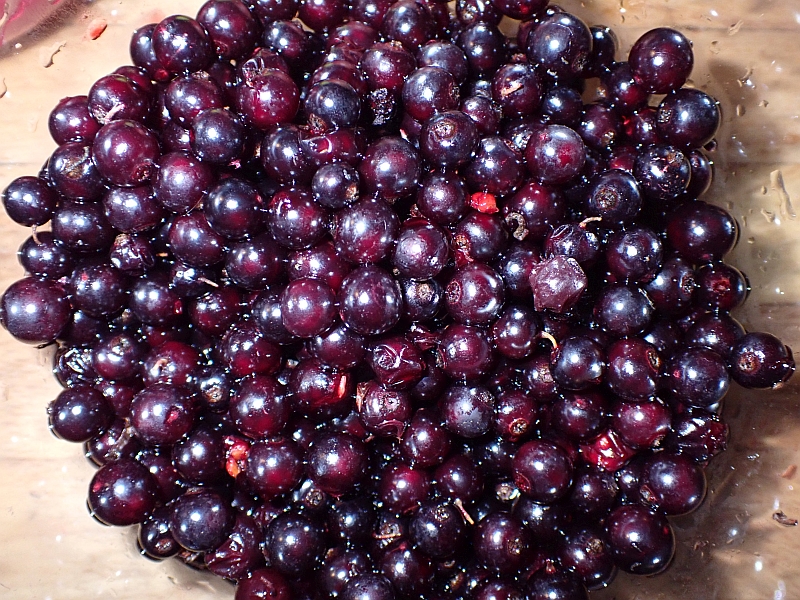
Tag Archives: Worcesterberry
Worcesterberries and Cellary
With a series of -4C nights forecast, I’m harvesting and moving the last vegetables into the house and cellar. There are still many Worcesterberries (Ribes divaricatum) in perfect condition, eating with apples with muesli every morning. Harvested another load this morning as I expect that they will freeze and drop to the ground. 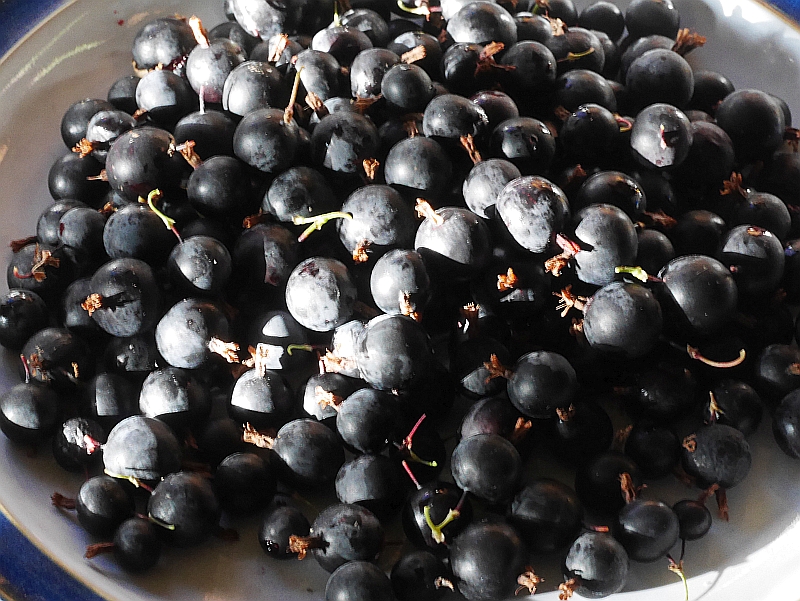 I also harvested the last celery from the garden this morning, replanted in pots in the depths of the cellar where they will sleep until spring as cellary, ready to harvest whenever I need them. A couple of plants were also moved from the balcony, grown in pots for ease of access, to the kitchen for even easier access, one of them attractiv edimental “Red Stem” celery…
I also harvested the last celery from the garden this morning, replanted in pots in the depths of the cellar where they will sleep until spring as cellary, ready to harvest whenever I need them. A couple of plants were also moved from the balcony, grown in pots for ease of access, to the kitchen for even easier access, one of them attractiv edimental “Red Stem” celery…
Gunnera-Chinese Yam salad
Delicious Gunnera-Chinese Yam salad with goldenberries (Barbadoslykt), Gunnera tinctoria, Dioscorea polystachya (Chinese yam) “Ichoimo”, carrot, turnip, various tomatoes, nodding onion (prærieløk), chicory (sikori), perennial kale (flerårig kål), Worcesterberries, celery, garlic, frozen Nasturtium flowers, Begonia flowers, ….




Late Fresh Berries
I love the seasonality of fruit and berries and one group of berries that can be harvested in October and November are particularly valuable when you only eat fresh and, later in the winter / spring, dried fruit and berries. The blackberries (bjørnebær) are finished now and we will be eating fresh stored apples now until at least April. This week after the first heavy frost I was able to continue harvesting Worcesterberries (a selection of Ribes divaricatum) at the bottom of the picture, Aronia prunifolia (purple chokeberry) at left and autumn olives / Japansk sølvbusk (Elaeagnus umbellata)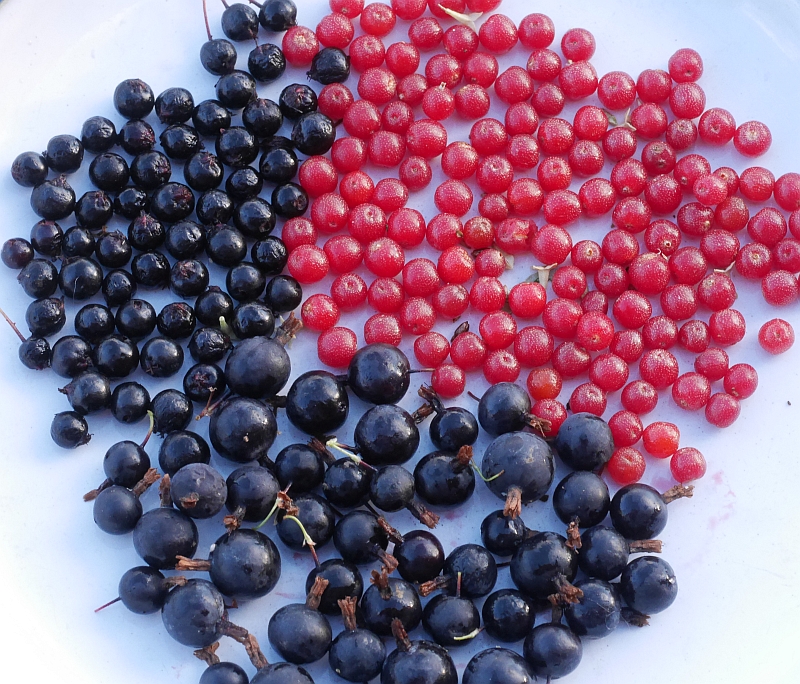
 1st November 2023: The Autumn Olive is really producing well now! Still some to havest in the community garden!
1st November 2023: The Autumn Olive is really producing well now! Still some to havest in the community garden!
Towards a record early harvest
This summer we’ve experienced a big swing in temperatures from one month to the next…from a record cold May to a record warm June followed by most of July being also record cold. The warmth in June straight after planting my runner beans on 11th (later than normal) resulted in quick growth and by the end of July the earliest variety, two-toned Painted Lady was already in flower, a month earlier than a normal year (if there is such a thing as normal anymore)….so maybe we are heading for a record crop, where runner beans are marginal and almost never give a good sized crop: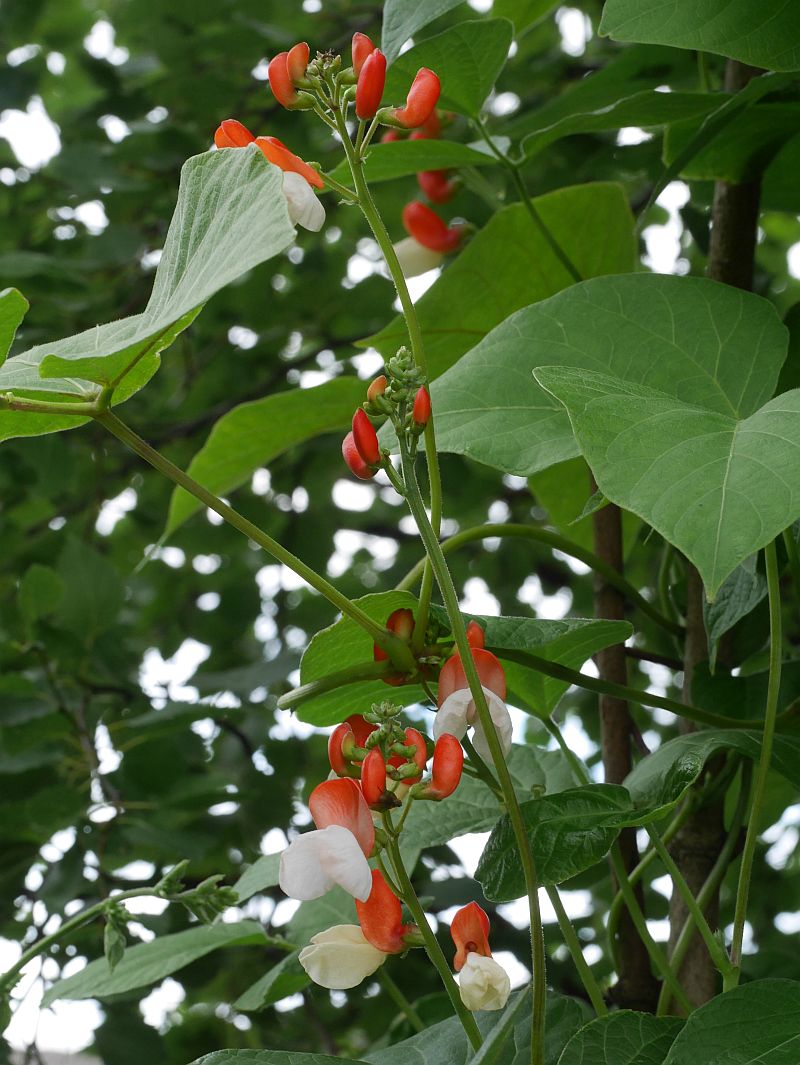
My courgettes (zucchini), planted out on 14th June on my shady composting area (no more than 2 hours of direct sunshine) also started cropping very early at the end of August: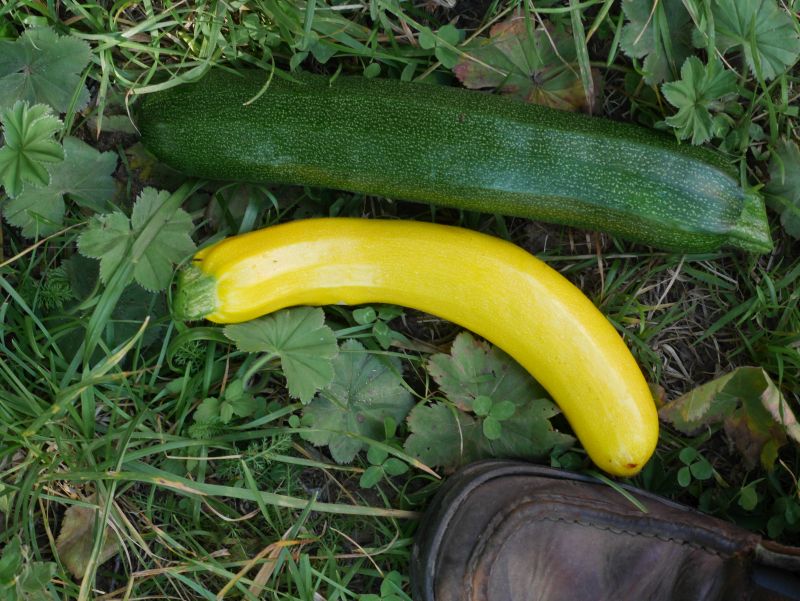
Finally, I was surprised when folk told me last year that their Worcesterberries (a selection of Ribes divaricatum) ripened in July. I’m usually eating mine from the middle of September to the first frosts late in October, but they are also turning colour already:
Bumble bee in snow
I didn’t expect to find a bumble bee feeding first thing this morning but I found this Bombus hypnorum (tree bumblebee/trehumle) busy visiting flowers of Ribes divaricatum and its selection Worcesterberry. The air temperature was about freezing…
Worcesterberries
Worcesterberry is a selection of the North American coastal black gooseberry (Ribes divaricatum)
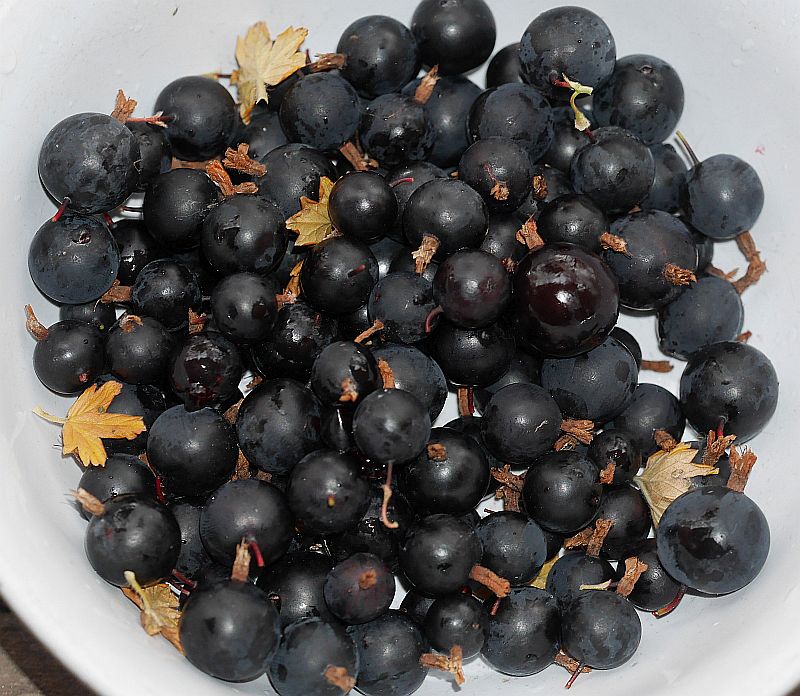
Worcesterleather and dried Aronia berries
221117: I’ve been eating my Worcesterberries daily with breakfast almost every day….yesterday, I harvested the last ones at -10C!! Added video of the worcestermarbles!

